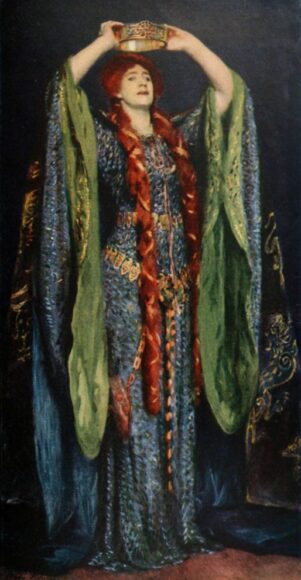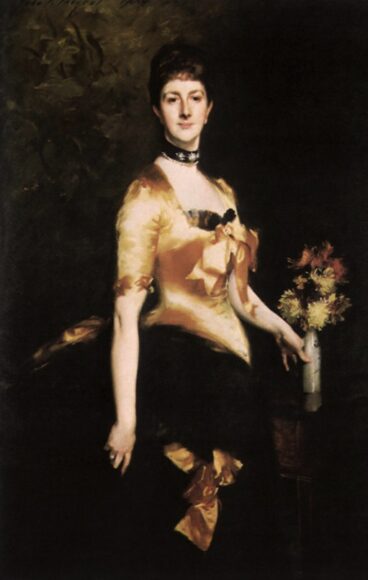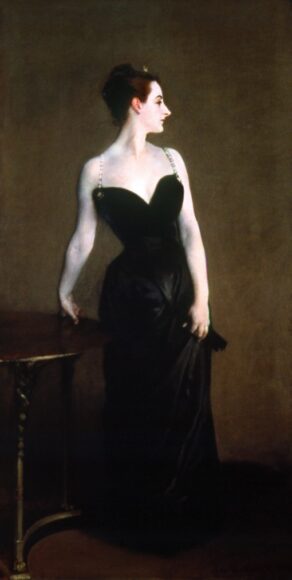Sargent and Fashion has roped together two exhibition subjects that are on the up. The first is John Singer Sargent himself (1856-1925). Having spent most of the 20th century being looked down on, this busy flatterer of the rich and pushy has re-emerged in recent decades as an artist of interest.
The second upwardly mobile subject promised here, fashion, has also popped into the exhibition good books. It used to be considered lowbrow and vulgar. But the triumph of celebrity culture has turned all such prejudices on their head. These days, at the Metropolitan Museum in New York, what the guests are wearing to the overprimped Met Gala is of far greater international interest than anything being examined in the exhibition halls.

Roping together Sargent and fashion is, therefore, a knowing piece of curation. Indeed, given how preachy Tate Britain has been in recent displays, it’s a surprise to see it being so transparently trendy. The big idea being proposed here is that Sargent was much more than a portraitist. Obsessed with couture and driven by old master envy, he was an artistic impresario, an ambitious creator of looks and events who controlled what his sitters wore in minute detail and whose painterly hopes soared far beyond preserving a likeness.
To carry this argument, the show has assembled an impressive cast of loans, with most of his famous works included, and combined them with surviving examples of his couture: the actual dresses and accoutrements worn by his sitters. Not only do you get to see the painting, you can compare it as well with the genuine schmatta.

To be fair, Terry’s Lady Macbeth outfit is so dramatically weird — pure Game of Thrones — that it’s an outlier at this event. In the main, the clothes Sargent paints are the sort worn to the theatre rather than on the stage. It’s the posh couture favoured by a nouveau riche clientele — society beauties, Americans in Paris, lord this, lady that, dandies, bankers, colonial soldiers — that was prepared to pay a thousand guineas a pop (the equivalent today of £100,000) for a full length.
His bread and butter clients were the wives of businessmen whom he would dress up in expanses of floaty stuffs that fill most of the picture. DH Lawrence famously complained of “nothing but yards and yards of satin from the most expensive shops, having some pretty head propped up on the top”.
At his best, Sargent was a dazzlingly good painter of floaty stuff. Edith, Lady Playfair, from 1884, sports an apricot top of such sparkling beauty it stops you on the other side of the room. Unfortunately her face is so lacking in expression or tangible identity I found myself forgetting it while actually looking at it.

The show is overstocked with these interchangeable likenesses. It could have done with an edit. By concentrating so fiercely on the clothes, Sargent gives up on the traditional portraitist’s task of finding depth and an inner life in his sitter’s presence. There’s lots of skilled, flashy brushwork, but barely a trace of emotion or empathy or insight. Most of the themes dreamt up by the curators to shape the journey are also too vague to be helpful. Plenty of examples from one theme could have sat just as happily in another theme.
In his most celebrated painting, the notorious portrayal of Madame X, the mysterious brunette with the hourglass figure and artificially white skin, is captivating for the same reasons that Elizabeth Hurley was captivating in that black number that was held together with safety pins: striking silhouette, lots on show, lots implied. It’s a grabby image, but would you recognise Madame X if you bumped into her in the street? I doubt it. She’s 90 per cent fashion plate, 10 per cent real person.
Sargent’s men tend to be more identifiable. There are fewer of them and there’s less cloth filling the picture. But my, what a pretentious and preposterous brigade they form. Dr Pozzi was actually a gynaecologist, but by dressing him in a showy red dressing gown and posing him against deep burgundy curtains, Sargent gives him the air of a hero at a key moment in a tragic opera.
W Graham Robertson was a friend of Oscar Wilde and a busy art collector whom Sargent insisted on dressing in an ankle-length coat that gave him the outline of a pipe cleaner. The silly pose is pushed into absurdity by the sleeping poodle at his feet with a pink ribbon in its hair.
In the past Sargent was looked down on because his art seemed so backward. A couple of decades younger than Cézanne, younger than Gauguin, younger than Van Gogh, his art seemed to be stuck in an 18th century that could never end.
But time can be kind to painters. The further away you move from their era, the blurrier their faults become. Now that Sargent no longer needs to be measured against his own reality, he seems to have become more relevant to ours.
Vacuous celebrities, absurdly expensive clothes, nobodies posing as somebodies — Sargent’s world strikes a chord today because we recognise it so easily as our world.
★★★★☆
Sargent and Fashion is at Tate Britain to July 7
